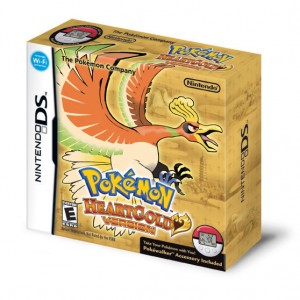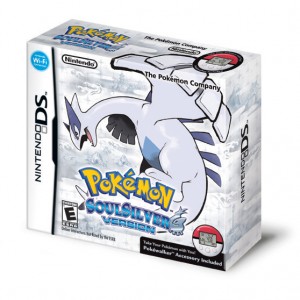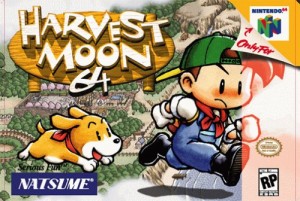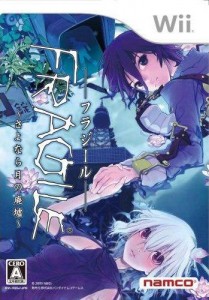Pokemon HeartGold/SoulSilver review
Posted on 14 years ago by Brian(@NE_Brian) in DS, Reviews | 8 Comments
Game Info:
System: Nintendo DS
Category: RPG
Players: 1-2 (versus)
Release date: March 14, 2010
Developer: Game Freak
Publisher: Nintendo
Pokemon HeartGold and SoulSilver are the latest games in Nintendo’s hugely successful Pokemon series, though they are both remakes of Gold and Silver: two Pokemon titles that were released back in 2000 for the Game Boy. Gold and Silver were believed by many to be the best games in the entire series, adding many innovations that have become standard, like the game’s internal clock and Pokemon breeding. Do HeartGold and SoulSilver manage to do these classic games justice, or do they not hold up after ten years and 200-and-something new Pokemon?
Time Capsule: Harvest Moon 64
Posted on 14 years ago by Brian(@NE_Brian) in Features | 7 Comments
If there’s one thing that I’ve learned as a gamer, it’s that I can be entertained by some of the weirdest things sometimes. By ‘weird’ I don’t mean bad or creepy or bizarre, I just mean unexpected. And perhaps one of the most unexpectedly entertaining games of all is Harvest Moon 64.
The Harvest Moon franchise is no stranger to Nintendo consoles, having had its start in 1997 on the venerable Super Nintendo. The setup is decidedly simple: The player’s grandfather has just died, leaving behind his old farm in utter disrepair. It is up to the player to reclaim this desolate landscape and turn it into the successful goldmine of produce it once was, all while meeting and befriending the local townsfolk along the way. You’ve got all the time in the world to make a life for yourself. There are tons of crops to be harvested, cows to be milked, and women to be wooed in this intriguing little simulation.
World Cup soccer, free running intensity, and fighting extinction: Retail Releases of 04/26
Posted on 14 years ago by Austin(@NE_Austin) in Features | 0 comments
Every week Nintendo puts out a press release talking about all the great new downloadable titles that are coming out, but never something showcasing the occasionally-decent games that come out in retail. Well, I’m gonna change that. This week, Nintendo gamers are treated with world cup soccer, free running intensity, ruthless romans, and fighting extinction.
What do YOU think? A winning formula for selling third party Wii titles
Posted on 14 years ago by Austin(@NE_Austin) in Features | 6 Comments
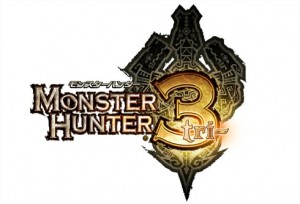
The last article I wrote, “What do YOU think? Wii is the best console for third party ‘core’ titles?”, discussed the idea of sales comparisons from the PlayStation 3 and Xbox 360 to the Wii as being unfair, because developers were comparing top-quality titles to mediocre titles and expecting similar sales. In that article, I stated that a game needs 2 things to sell well: Good reviews, and good advertising. Of course, it helps if the game isn’t a niche genre, but that is the least important of the three. In the last 2 months, two big Wii titles have been released, both of which have gotten pretty good review scores and a good amount of advertising; Monster Hunter Tri, and Red Steel 2. The latter of these two titles supposedly sold just 50,000 copies in its first month. Now, some people say that Red Steel 2’s first month wasn’t really a full month (12 days), and other sources report that the game has in fact sold more than 100,000 units, but based on the official numbers given to us by Ubisoft, it’s a solemn start for an (apparently) very good game.
The best and worst Nintendo series of all time – Part 2
Posted on 14 years ago by Brian(@NE_Brian) in Features | 4 Comments
In the last part, I took a look at various Nintendo series of games and worked out based on Metacritic scores what the best five franchises were. This time we’re going to take a look at the absolute worst series.
My way of categorizing games seemed to confuse a few people so I’ll start this second and final part by clarifying a few things. I used Super Smash Bros.’ way of categorizing series as a basis, attributing each game to a specific character. While some games feature more than one character (like Mario vs. Donkey Kong) or some don’t play like other games in their series at all (Super Princess Peach), they all share similar attributes and take place in the same universe, so I’d classify all of them as “Mario” games. The Mario series in particular is so massive that I had to include some spin-offs like Mario Kart or Mario Party as separate franchises. I’m probably boring a lot of people, so anyone who wants to know more specifics, just read the rules I outlined in the last part.
What do YOU think? Wii is the best console for third party ‘core’ titles?
Posted on 14 years ago by Austin(@NE_Austin) in Features, Wii | 19 Comments
My hypothesis: Wii is at least as good as Sony’s PS3 and Microsoft’s Xbox 360, if not better, at selling ‘core’ third party titles.

It seems to me that in the last year and a half, third party Wii developers have been complaining more and more about how the Wii has caused their games to fail, and subsequently lose money. Is this true? Well, developers have definitely lost money, but I don’t believe it’s the fault of the Wii, and the reason is simple: People are making comparisons that take average-reviewed niche games and compare them with critically acclaimed mainstream games. The fact of the matter is that comparing No More Heroes to Call of Duty 4 or Halo 3 is just ridiculous, because no matter what system a game like No More Heroes is released on it will not sell as well as a mainstream shooter game. Therefore, the goal of this article is to compare the sales of a game like No More Heroes to another game in its genre with similar review scores, rather than taking unfair comparisons and basing my judgments off of them.
The best and worst Nintendo series of all time – Part 1
Posted on 14 years ago by Brian(@NE_Brian) in Features | 9 Comments
What Nintendo series is the best? The question has puzzled scholars for decades and turned forums into vicious flame wars. But today I’ve worked out once and for all what the greatest Nintendo franchises of all time (up to this point) are. Unfortunately, it’s through counting average review scores via Metacritic, so there’s a number of things I need to point out before I go into detail.
Fragile Dreams: Farewell Ruins of the Moon review
Posted on 14 years ago by Austin(@NE_Austin) in Reviews, Wii | 9 Comments
System: Wii
Category: RPG
Players: 1
Developer: Namco Bandai Games/tri-Crescendo
Publisher: XSEED
Available: Now
I’m going to start this review off by telling you I have no idea how to start this review off. Why? Because Fragile is such a unique game, I’m hard pressed to review it as a “game” at all. Unfortunately, being that this is a website about games and not about whatever it is that Fragile is, I’ll have to just give it my all and hope things turn out okay.
Fragile Dreams: Farewell Ruins of the Moon is classified as a role playing game, and it follows the tale of a young 15 year old boy named Seto who finds himself alone in the world after his “grandfather” (whether it actually was his grandfather or just an old man he was living with remains to be seen) passes away during the summer. As such, he is left to explore the ruined world and look for survivors on his own with no information as to what happened that left everyone dead except for him. Shortly thereafter, he runs into a girl (a mysterious girl, at that) and decides he better follow her if he wants to be not-lonely for the rest of his life. Thus begins the solemn tale of Fragile Dreams.
What do YOU think? High Voltage Software
Posted on 14 years ago by Brian(@NE_Brian) in Features | 6 Comments

Ever since The Conduit was announced back in mid-2008, developer High Voltage was put right on center stage, with every Wii developer taking note on what they were doing, and how they were achieving it. For the first time in the console’s lifetime, it seems that Wii owners would be getting a fully-equipped “next-gen” (term used VERY loosely) shooter experience that wasn’t behind in terms of tech or online capabilities. Hype for The Conduit was so huge that it seemed nearly impossible for the game to truly deliver what was being idealized, and, as it turns out, it didn’t. The game released in summer of 2009, sold a measly 400,000 copies to this date, average critics scores usually congregating around 70%. No, surely High Voltage Software did not entirely deliver with The Conduit, but for having developed the engine alongside the game, it’s not as bad as one may think. Regardless, a mediocre game is a mediocre game, and The Conduit is no exception.
Nintendo: The Musical
Posted on 14 years ago by Brian(@NE_Brian) in Features | 3 Comments
We have musicals based on everything. Musicals based on singing trains, making musicals, cats…So logically someone is bound to make a musical based on a video game at some point. Thankfully, plenty of fans of both games and musical theater have heard the curtain call, and so we have a number of fan-made musical productions based on Nintendo series.
